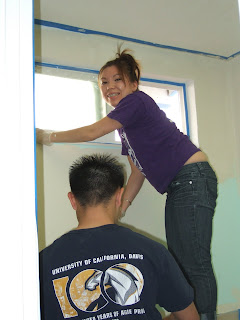The clerk who took my order unraveled the two crisp, white cotton jackets after I took them out of their plastic bags, and I could see she was wondering, "What the heck are these?" I'm sure she's seen her fair share of strange apparel, having worked at this embroidery shop for a while. These are not your typical t-shirts to be silk-screened, or polo shirts to be embroidered with the company logo, or even baseball caps to be tagged for a sense of team unity.
"I want my first name embroidered on the left sleeves," I told her, handing over my gi tops.
When a different clerk from the embroidery shop handed me back the processed order, now with my name etched in neat black thread, I could see him eying the many bruises along my forearms. There were the bigger, most prominent bruises from taking ukemi for yonkyo practice, blackish-green to blue, their telltale hues a color code indicating where along the week I got them. There was the newborn reddish bruise at the base of the ulna bone on my left wrist from blocking yokomenuchi strikes. There were the thumb-sized bruises at the forearm base from the tight tai-no-henko grips. There was also the bruise on the inner right knee from my bad footwork, and the stubbed toe coming up from a roll. And, though he couldn't see this, I could feel the hyper-extension of my left elbow from a full day of kokyu nages.

Part of me knows this is my body's usual way of protesting a year's worth of almost-daily abuse. It's the same part of me that fears the pain--a reminder of my mortality, the paranoia that I'll undergo a permanent and irreversible injury I'm bound to regret. But most days, it's this pain that wakes me up, that reminds me how I'm alive to feel it. It's this urge that sends me flying to the dojo almost everyday after work, this instinct that guides my feet back on the mat even when I think I'm tired or lazy or that I don't want to train. I learn to take the pain and give it, to heal from it only to receive it again. Part of me thinks I am crazy and knows that the litany of bruises do not go well with the inevitable short-sleeve outfits of the coming summer. But, really, I can't help it. It feels like the thing to do.


































